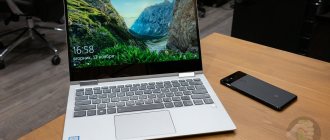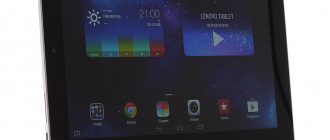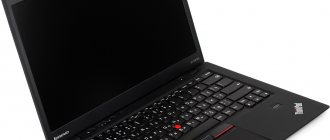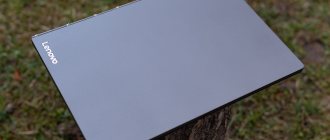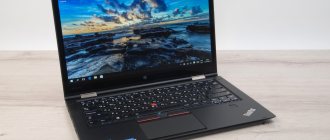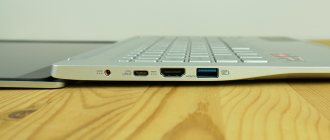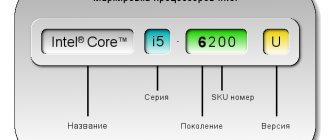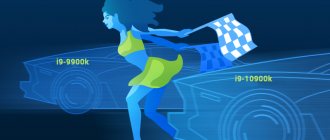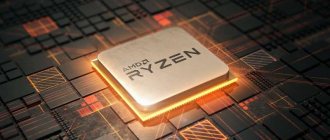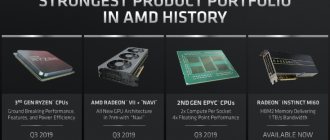Transformable Yoga Tablet
Ashton Kutcher does “yoga” in his service at Lenovo After Lenovo’s popular family of convertible ultrabooks called Yoga was filled with all possible modifications and variations “on the theme,” it was hard to expect that the company wouldn’t include tablets in the same place very soon. And this event has already happened: just a couple of days ago in the capital of world fashion, the Italian city of Milan, the first tablet was presented, included in the “flexible” line of Yoga devices in every sense.
Surely, the “city of fashion” was not chosen by chance: the Lenovo Yoga Tablet is clearly intended to present the world with an interesting-looking, unusual, attractive, easy-to-use, and even somewhat innovative device in terms of design, and we are talking about the hardware characteristics of the new product last but not least.
Detailed specifications of Lenovo Yoga Tablet 10 Wi-Fi (B8000-F)
- SoC: MediaTek MT8125
- CPU: 4 cores ARM Cortex-A7 @1.2 GHz
- GPU: PowerVR SGX 544MP
- RAM: 1 GB LP-DDR2
- Display: IPS, 10.1″, 1280×800, 149 ppi
- Internal memory: 16/32 GB eMMC
- Supports microSD memory cards up to 64 GB
- Wi-Fi 802.11b/g/n
- GPS, Bluetooth 4.0
- Cameras: 5 MP rear with autofocus, 1.6 MP front
- Micro-USB, OTG
- Orientation and lighting sensors, accelerometer, compass
- Operating system: Google Android 4.2.2
- Size: 261×180 with a thickness of the “narrow” part from 8.1 to 3 mm (no data on the thickness of the cylindrical part)
- Weight: 605 g
| Lenovo Yoga Tablet 10 | Lenovo Yoga Tablet 8 | Lenovo Yoga Tablet 10 (3G) | Lenovo Yoga Tablet 8 (3G) | Iconbit Nettab Thor Quad FHD | Asus Memo Pad FHD 10 | |
| Screen | IPS, 10.1″, 1280×800 (149 ppi) | IPS, 8″, 1280×800 (188 ppi) | IPS, 10.1″, 1280×800 (149 ppi) | IPS, 8″, 1280×800 (188 ppi) | IPS, 10.1″, 1920×1200 (224 ppi) | IPS, 10.1″, 1920×1200 (224 ppi) |
| SoC (processor) | MediaTek MT8125 @1.2 GHz (4 ARM Cortex-A7 cores) | MediaTek MT8125 @1.2 GHz (4 cores, ARM Cortex-A7) | MediaTek MT8389 @1.2 GHz (4 ARM Cortex-A7 cores) | MediaTek MT8389 @1.2 GHz (4 cores, ARM Cortex-A7) | Rockchip 3188 @1.6 GHz (4 ARM Cortex-A9 cores) | Intel Atom Z2560 @1.6 GHz (2 x86 cores, Hyper-Threading support) |
| GPU | PowerVR SGX 544MP | PowerVR SGX 544MP | PowerVR SGX 544MP | PowerVR SGX 544MP | Mali-400 MP4 @533 MHz | PowerVR SGX 544MP2 @400 MHz |
| RAM | 1 GB | 1 GB | 1 GB | 1 GB | 2 GB | 2 GB |
| Flash memory | 16 GB | 16 GB | 16 GB | 16 GB | 16 GB | 16 or 32 GB |
| Memory card support | microSD | microSD | microSD | microSD | microSD (up to 32 GB) | No |
| Connectors | Micro-USB (for charging, OTG and PC), 3.5mm headset jack | Micro-USB (for charging, OTG and PC), 3.5mm headset jack | Micro-USB (for charging, OTG and PC), 3.5mm headset jack | Micro-USB (for charging, OTG and PC), 3.5mm headset jack | Micro-USB, Micro-HDMI, 3.5 mm headphone jack | Micro-USB, Micro-HDMI, 3.5 mm headphone jack |
| Cameras | rear (5 MP) and front (1.6 MP) | rear (5 MP) and front (1.6 MP) | rear (5 MP) and front (1.6 MP) | rear (5 MP) and front (1.6 MP) | rear (5 MP) and front (0.3 MP) | rear (5 MP) and front (1.2 MP) |
| Internet | WiFi | WiFi | Wi-Fi, 3G HSPA+ | Wi-Fi, 3G HSPA+ | WiFi | WiFi |
| Wireless modules | Bluetooth, GPS | Bluetooth, GPS | Bluetooth, GPS | Bluetooth, GPS | Bluetooth | Bluetooth 3.0, GPS |
| operating system | Google Android 4.2.2 | Google Android 4.2.2 | Google Android 4.2.2 | Google Android 4.2.2 | Google Android 4.1.1 | Google Android 4.2.2 |
| Dimensions* (mm) | 261×180×8,1 | 213×144×7,3 | 261×180×8,1 | 213×144×7,3 | 261×171×9,6 | 265×182×9,5 |
| Weight* (g) | 605 | 401 | 610 | 404 | 650 | 572 |
*according to the manufacturer; Lenovo tablets indicate the overall size of the “thin” part
A pompous presentation on a global scale brought together several hundred journalists from all over the world within the walls of one of the fashionable clubs in the very center of Milan. Minimal lighting, an expensive and unusual circular installation of dozens of real Yoga Tablets, top managers of the company alternately appearing as speakers on an impromptu stage in the center of the circle - everything followed a familiar scenario.
The unusual began later: Gianfranco Lanci, President of Lenovo in the EMEA region, who, as usual, presented the next new product in person, gave the floor to his new “employee,” whose name is well known to literally everyone on the planet. Popular actor (and, as it turned out, entrepreneur, technology investor, producer and philanthropist) Ashton Kutcher was suddenly officially introduced to the position of product development engineer at Lenovo. At first, everyone thought it was just another prank (the actor often stars in comedies), but the young man continued to insistently talk about his place in the Lenovo development team and even showed everyone his signature badge and business cards.
The actor did this, however, not personally - humorous videos were presented to the attention of those present in portions, which told about the first days of Ashton’s work in the new team. Later, by the way, much lesser-known details about the actor’s off-stage life came to light: it turns out that in 2011 he became one of the founders of the venture fund A-Grade Investments along with Guy Oseary and Ron Burkle. To date, A-Grade has invested in several technology companies, including Airbnb, Flipboard, Foursquare, Path Quora, Shazam, SoundCloud, Spotify, Fancy and Uber. Kutcher was also a philanthropist in the creation of Thorn: Digital Defenders of Children, a company that invests in, creates and implements cutting-edge technologies in the fight to end the sexual exploitation of children. In 2010, Kutcher was named one of Time magazine's 100 most influential people.
In general, inviting modern movie stars not only as advertising people, but also introducing them into your team as real employees is obviously becoming some kind of new trend among marketers. Suffice it to recall the similar activity of the Acer company, which now employs actress Megan Fox, who persistently wants to “talk to dolphins.” To tell the truth, Ashton Kutcher turned out to be a much more charming person, so watching hilarious videos with his participation was fun and relaxed. As a result, all the assembled journalists understood the main thing well: Lenovo worked very hard on the design of the new tablet, leaving behind the scenes the details of the not very advanced hardware.
Questions about some discrepancy between the expressive, expensive appearance and the modest electronic filling were dispelled by the chief designer of Lenovo in a personal conversation with Russian journalists. A logical question received an equally logical answer: the pragmatic Chinese always know exactly what the market wants, and in the depths of their factories they produce only what the market already wants. This, by the way, is very different from innovative companies like Apple, which, on the contrary, “force” the market to want something. But that’s not about that now. So: following the opinion of distribution partners, who know for sure that in the Android tablet segment, inexpensive devices are now selling best, all Lenovo development departments were forced to artificially “reduce the price” of the new tablet. Therefore, engineers later invested not top-end, but modest Chinese electronic hardware with SoC MediaTek into the cute design that was born in the heads of the designers. The same applies to screens with resolutions far from Full HD, as well as camera modules, communication interfaces, and the like. However, at this point it is worth immediately noting that in real work with the tablet, the relative cheapness of the hardware is not particularly noticeable. Everything works very quickly, smoothly, without jerks or slowdowns, the interface is no less responsive than that of devices running on top Qualcomm platforms. In synthetic tests, the new product naturally lags behind them, but in real life this is not so noticeable. The display picture, however, with such a low pixel density (149 ppi) cannot help but seem loose, but nothing can be done about it - with a Full HD screen, the model could no longer be called “inexpensive”.
Equipment
The tablet goes on sale in a wide, flat box made of thick, high-quality cardboard. The delivery set includes a network adapter (output current 2 A), a USB-Micro-USB connecting cable, a warranty card and brief instructions for use. Very modest equipment, everything else will have to be purchased separately - even the OTG adapter, which is usually good practice among the Chinese to equip your tablet with. This device supports the On-The-Go mode for connecting external devices, so such an adapter would not be out of place here. It’s worth mentioning here that, as an option for the tablet, you can purchase a branded Bluetooth keyboard, which is put on it like a case and covers the screen, turning it off. A convenient addition, especially considering the presence of a touchpad on this keyboard, however, it has not yet been possible to get it to type in Russian, even with the help of third-party software.
Design
The design of the tablet with a rounded rod on the side, according to Lenovo designers, is optimal for accommodating batteries, and also serves as a silent reminder of the days when people still read the paper press en masse. The developers hope that human muscle memory has not yet forgotten how to hold a bent magazine, so people should like their new electronic device. Holding the tablet in a vertical orientation actually turned out to be quite convenient, and the design itself was suspiciously reminiscent of early Sony ultrabooks, when they weren’t even called that yet, and, of course, the Sony Tablet S. However, Lenovo’s chief designer did not see any connection between these solutions .
The Lenovo Yoga Tablet is made of metal, which makes up the frame of the device, a metal frame and a rotating stand, and plastic, which makes up the textured back cover. They had to use plastic here so that the metal would not shield the antennas of the wireless communication modules. The metal feels matte, rough, not painted, and the textured surface of the plastic back cover is laser engraved and is also completely non-slip.
If you do not take into account the rounded rod, the rest of the body has a very small thickness, gradually decreasing from 8 to 3 mm. The abundance of metal, a beautiful power button located at the end of the metal rod, a metal stand that snaps off with a pleasant click - all these are undoubted advantages and really decorate the device, adding to it a kind of solidity and making it look more expensive.
As for the unusual movable element on the body, thanks to which the tablet was able to enter the Yoga family of folding devices, it is actually a completely ordinary metal stand that can hold the tablet in any position from vertical to horizontal. This element does not provide any other functionality, but this is more than enough: from now on you don’t have to think at all about how to secure the tablet in one position or another. At this point, the developers talk about the compliance of this rotating element with the three-position concept that unites all Yoga devices. Yoga Tablet offers users three modes: hold (book), tilt (keyboard) and stand (console). In this way, according to the developers, the tablet adapts to the preferences of users, rather than forcing them to adapt to technology.
Under the cover there are slots for a memory card and a SIM card (if the device supports 3G; otherwise, the second slot is simply sealed). Here, on the back side, on the cylinder itself, the main rear camera module is located. There is nothing else on the back side; all other controls are located on the sides of the device.
In the side metal edges of the tablet you can find a paired two-position volume rocker, as well as a Micro-USB connector that supports, as mentioned above, OTG mode. The audio output with a diameter of 3.5 mm for standard headphones or a headset turned out to be embedded directly into the end of the metal rod on the other side of the power button.
In the same rod, at the ends on the side of the front panel, there are two rows of small holes that make up the stereo speaker grilles. The speakers sound very loud and bassy, Dolby Digital Plus technology is supported, which has a whole settings section and even has its own separate application icon. In terms of sound quality, as well as the convenient location of the user-facing stereo speakers on the sides of the Lenovo Yoga Tablet, the Lenovo Yoga Tablet can be called one of the best solutions on the market.
There are no hardware control buttons on the front panel; they are all virtual soft buttons and change their location depending on the screen orientation. Here, under the protective glass, there are eyes for the front camera and sensors.
As for the color color, so far in nature there is only one option - metallic gray. From a conversation with the chief designer of Lenovo, we were able to understand that the orange color, which was previously used by developers for other devices in the Yoga line, did not suit our needs in this case, and the designer rejected this option. But the appearance of the Yoga Tablet in black is not at all excluded - at least, the designers themselves are going to try this option.
Two different-sized modifications of the Lenovo Yoga Tablet will be available for sale: with a 10.1-inch screen, like the test sample we had in our hands, and an 8-inch model with the same screen resolution. There is no difference between the two models, other than physical dimensions. For a tablet with such an unusual design, naturally, only a special case is suitable, so Lenovo has developed a whole line of various accessories for its Yoga Tablet models, the materials of which are different - from leather to plastic.
Screen
The tablet screen is covered with a glass plate with a mirror-smooth surface. Under the protective glass there is a good-quality IPS matrix with a good brightness reserve and wide viewing angles. The only significant drawback here seems to be the resolution and, accordingly, the low density of dots. In numbers, the Yoga Tablet 10 screen parameters are as follows: screen dimensions - 136x217 mm, diagonal - 256 mm (10.1 inches), resolution - 1280x800 pixels, 149 ppi. The 8-inch version has the same resolution, so the dot density is higher (188 ppi). However, the smaller screen turned out to be worse in terms of its characteristics, and above all, in terms of viewing angles.
The display brightness has both manual and automatic adjustment, the latter based on the operation of the light sensor. Multi-touch technology allows you to simultaneously process up to ten touches, which is confirmed by tests.
Camera
Lenovo Yoga Tablet comes standard with two digital camera modules. The front camera here has a 1.6 MP sensor. The main rear camera is equipped with a 5-megapixel module. By default, the camera shoots in maximum resolution, the pictures are 2560x1920 in size. You can independently evaluate the not very high quality of the shooting using the example of the test photographs posted below.
There are many settings for managing shooting, the interface is standard for Android - all settings are divided into three vertical sections: general, photo, video. There is a choice of modes (panorama, HDR, smile, best photo), it is possible to manually change the white balance, add a geotag, add color effects, etc. You can take pictures either by touching the screen or by pressing the hardware volume key on the side, which in camera mode is responsible for releasing the shutter. While recording video, you can also take photos.
OS and software
The system uses the Google Android software platform version 4.2.2 and a third-party graphical interface, which slightly changes the video appearance, but brings noticeable changes to the internal structure and the entire organization as a whole. Here, like many Chinese products, there is no application menu as such: all icons of installed applications are simply placed on the desktop, like the unforgettable Miui. It is possible to add desktops, but there is no ability to create folders, which looks archaic in today's times.
There are not very many pre-installed programs; there is a full-fledged office suite, a file manager, an antivirus and another file manager, which is automatically activated when a flash drive is connected via an OTG adapter. In general, the interface is absolutely nothing special - in terms of visual design, the shell is simple and unpretentious. But there are no complaints about its performance at all: everything is flipped and opened at the speed inherent in the fastest and most modern mobile solutions, there are absolutely no annoying slowdowns.
Platform and performance
The Lenovo Yoga Tablet runs on a single-chip MediaTek MT8125 system containing 4 ARM Cortex-A7 cores with a frequency of 1.2 GHz each, supported by the PowerVR SGX 544MP graphics adapter for graphics processing. The device has 1 GB of RAM, the built-in flash drive can have a capacity from 16 to 32 GB, while all devices in the series support microSD memory cards up to 64 GB, in addition, you can always take advantage of the OTG mode by connecting a USB cable to the tablet. flash drive. This is what concerns the tested model without a 3G module. The 3G version has a different SoC hardware - MediaTek MT8389; their other characteristics are similar.
To get an idea of the performance of the platform of the tested tablet, we will conduct a standard set of tests.
Test results in MobileXPRT, as well as the latest versions of AnTuTu 4.x and GeekBench 3. The “fair version” of the AnTuTu X benchmark, updated daily in order to avoid “cheating” on the part of developers, showed a much lower value than the standard one, which makes it slightly think about it. Otherwise, there are no revelations: the Yoga Tablet’s platform is rather weak, this is confirmed by all tests, and nothing can be done about it. For convenience, all results are summarized in the tables below.
| Lenovo Yoga Tablet 10 (MediaTek MT8125) | Iconbit Nettab Thor Quad FHD (Rockchip RK3188) | Asus Memo Pad FHD 10 (Intel Atom Z2560) | |
| Geekbench 3 (single core/all cores, more is better) | 326/1099 | 510/1448 | — |
| Antutu 4.0 (bigger is better) | 13393 | 19407 | — |
| Mobile XPRT 2013 (bigger is better) | 96/98 | — | — |
Testing the graphics subsystem in the 3DMark cross-platform test
| Lenovo Yoga Tablet 10 (MediaTek MT8125) | Iconbit Nettab Thor Quad FHD (Rockchip RK3188) | Asus Memo Pad FHD 10 (Intel Atom Z2560) | |
| 3DMark Ice Storm (bigger is better) | 2595 | 3619 | 5788 |
| 3DMark Ice Storm Extreme (bigger is better) | 965 | 2817 | 3409 |
| 3DMark Ice Storm Unlimited (bigger is better) | 1301 | — | — |
Results of testing the graphics subsystem in the Epic Citadel gaming test.
| Lenovo Yoga Tablet 10 (MediaTek MT8125) | Iconbit Nettab Thor Quad FHD (Rockchip RK3188) | Asus Memo Pad FHD 10 (Intel Atom Z2560) | |
| Epic Citadel, High Performance (bigger is better) | 57.6 fps | 36.9 fps | 59.2 fps |
| Epic Citadel, High Quality (bigger is better) | 55.0 fps | 36.0 fps | 58.3 fps |
| Epic Citadel, Ultra High Quality (bigger is better) | 23.2 fps | — | — |
As for benchmarks for assessing the speed of the javascript engine, you should always make allowance for the fact that their results significantly depend on the browser in which they are launched, so the comparison can only be truly correct on the same OS and browsers, and this is possible during testing not always.
| Lenovo Yoga Tablet 10 (MediaTek MT8125) | Iconbit Nettab Thor Quad FHD (Rockchip RK3188) | Asus Memo Pad FHD 10 (Intel Atom Z2560) | |
| SunSpider 1.0 (stock browser, smaller is better) | 1405.3 ms | 1693.6 ms | 1512 ms |
| Mozilla Kraken (stock browser, smaller is better) | 18459.8 ms | 20412.8 ms | 16930 ms |
Playing video
| Format | Container, video, sound | MX Video Player | Standard video player |
| DVDRip | AVI, XviD 720×400 2200 Kbps, MP3+AC3 | plays normally | plays normally |
| Web-DL SD | AVI, XviD 720×400 1400 Kbps, MP3+AC3 | plays normally | plays normally |
| Web-DL HD | MKV, H.264 1280×720 3000 Kbps, AC3 | plays normally with the Hardware+ | The video plays fine, but there is no sound¹ |
| BDRip 720p | MKV, H.264 1280×720 4000 Kbps, AC3 | plays normally with the Hardware+ | The video plays fine, but there is no sound¹ |
| BDRip 1080p | MKV, H.264 1920×1080 8000 Kbps, AC3 | plays normally with the Hardware+ | The video plays fine, but there is no sound¹ |
Hardware+ mode
; The standard player does not have this setting
Autonomous operation
It is not yet known exactly what the total capacity of both batteries built into the Lenovo Yoga Tablet is, but it is known that there are two of them: one cylindrical, and the other flat, under a plastic cover. At all presentations, the developers never tire of advertising how long the Yoga Tablet can run on a single charge: they cite a figure of 18 hours of battery life. Having tested the tablet in the three most vital operating modes of a mobile device for users, we obtained the following results.
| Lenovo Yoga Tablet 10 (MediaTek MT8125) | Pipo Max-M7 Pro (Rockchip RK3188) | Iconbit Nettab Thor Quad FHD (Rockchip RK3188) | Cube U30GT2 (Rockchip RK3188) | Asus Memo Pad FHD 10 (Intel Atom Z2560) | |
| Game scene 3D | 11 h 45 min (Epic Citadel Guided Tour, 100 cd/m²) | 4 h 32 min (Epic Citadel Guided Tour, 100 cd/m²) | 4 h 30 min (Epic Citadel Guided Tour, 100 cd/m²) | 4 h 10 min (GLBenchmark Egypt HD, 60 fps, maximum brightness) | 5 h 20 min (Epic Citadel Guided Tour, 100 cd/m²) |
| Playing video | 16 h 40 min (Wi-Fi on, MX Player, 720p, 100 cd/m²) | 6 h 13 min (Wi-Fi on, MX Player, 720p, 100 cd/m²) | about 9 h (Youtube, 100 cd/m²) | 6 h 15 min (direct link, MX Player, 720p, 100 cd/m²) | about 9 h (Youtube, 100 cd/m²) |
| Reading mode | 16 h 40 min (FBReader, auto scrolling, 100 cd/m²) | 9 h 31 min (Moon+ Reader, auto-page, 100 cd/m²) | about 10 h (100 cd/m²) | 9 h (Moon+ Reader, auto scrolling, 100 cd/m²) | about 10 h (100 cd/m²) |
All expectations were met; the Lenovo Yoga Tablet really showed miracles of longevity, for which it can be awarded the title of record holder for battery life without charging. Continuous reading in the FBReader program (with a standard, light theme) at a minimum comfortable brightness level (brightness was set to 100 cd/m²) lasted until the battery was completely discharged for more than 16 hours, and when continuously watching videos from YouTube in high quality (HQ) with The device lasted approximately the same amount of time at the same brightness level via a home Wi-Fi network - these are record figures. And you can even play games on this tablet for a very long time - but here, of course, you should take into account that the quality of the screen image will be noticeably worse than usual for 10-inch models.
Bottom line
The Lenovo Yoga Tablet, despite all the apparent weakness of the hardware, “exposed” by synthetic tests, did not disappoint in real life after several days of close communication with the device. The materials are premium, there is a lot of metal, the tablet fits in your hand and looks great, besides, the speed of the interface, opening applications - everything is at the level of normal productive modern tablets with top-end hardware. The only downright weak point is the looseness of the picture visible to the naked eye due to the low resolution and low pixel density. This is especially noticeable on small fonts and smooth edges of small icons. This greatly spoils the impression, but, on the other hand, if there was a screen with Full HD resolution, a much more serious SoC would be required to ensure smooth operation with it. The tablet is definitely recommended for consideration as a relatively inexpensive purchase - the main thing is that the real price corresponds to the loud statements of the developers about the availability of the device. So far this is not particularly visible: the recommended retail price for an eight-inch model in Russia will be 11,990 rubles, and for a ten-inch model - 13,990 rubles, and this does not take into account the presence of a 3G module - with it, devices will be sold even more expensive. We hope that the pricing policy will be revised over time, but so far the prices abroad are similar: 8″ - 229 euros, 10″ - 299 euros. In our country, both versions should go on sale during November.
⇡#Screen testing
At first glance, the screen of the new “Yoga” seemed good to us. The diagonal of the display, protected by Gorilla Glass, is 13.3 inches, and the resolution is 3200x1800 pixels (276 PPI). This means that enabling scaling in Windows will be mandatory. Matrix model: Samsung LTN133YL03L01, it belongs to the IPS family, substrate material is IGZO.
The maximum white brightness, according to our measurements, is 302 cd/m2, and the black brightness is a suspiciously high 0.65 cd/m2. As a result, the static contrast value turned out to be quite low - 465:1. After calibration, the white brightness dropped to 297 cd/m2, the black brightness increased very much - to 0.96 cd/m2. As a result, the static contrast dropped to 310:1. The measured black field brightness and static contrast levels are much worse than the average values for modern IPS matrices.
The color gamut of the Yoga 3 Pro display is 87% sRGB, after calibration it decreased slightly to 86.7% sRGB. But the shape of the triangle came closer to the reference one.
The color temperature turned out to be close to the standard of 6500 K. Calibration helped bring the color temperature even closer to the standard.
Unfortunately, the calibration did not benefit the gamma curves. Before calibration, the curves of the three primary colors were close to each other and only slightly deviated from the standard. After calibration, the curves of green and blue colors came closer to the reference one, but the red curve, on the contrary, moved away from it.
But calibration was able to completely correct the problems with Delta E. Before this process began, the average Delta E value was 2.54 units, and the maximum was 7.99 units. After this procedure, the average Delta E value dropped to 0.33, and the maximum dropped to 1.01 units, and these are very good results.
Software and features
The tablet runs Android 9. Nothing is known about plans to update to the 10th version of the system. However, it is unlikely that it will radically change the functionality of the device.
The hardware platform is Qualcomm Snapdragon 439 with 3 GB of RAM and 32 GB of storage. The hardware is very modest and is not suitable for heavy games like World of Tanks: Blitz and Call of Duty Mobile. However, the tablet will handle something light and casual.
Like other Android devices, Google Assistant is installed here with support for voice commands and all the latest functions. Of the latter, it is worth highlighting the Ambient Mode. It displays the weather, clock, scheduled events, missed notifications and other information.
Also, on command, music and photo slideshows from Google Photos are launched. Thus, Lenovo YOGA Smart Tab turns into a smart screen with voice control. The tablet is equipped with three microphones and accurately recognizes commands within the room.
Photo: Artyom Bagdasarov / Lifehacker
The device can act as a hub for a smart home. It works in conjunction with other Google gadgets: cameras, speakers, media players and thermostats.
Other use cases are also possible, for example as a second screen for a computer. Unfortunately, Smart Tab does not support DisplayPort technology for receiving video signals via USB Type-C, so you will have to install specialized software like Spacedesk to broadcast images via Wi-Fi.
Equipment, accessories
The Lenovo Yoga Tablet 10 comes in a small black cardboard box, the only decoration of which is an illustration of several tilt options for the device. The device is supplied with only a 10 W wall charger with a detachable USB/micro-USB cable and a standard set of documentation.
Additionally, you can purchase a branded case with an appropriate margin for the cylindrical thickening, as well as an original Bluetooth keyboard with a touchpad, which can also serve as a removable hard cover that protects the tablet screen from damage.
Hardware platform, shell, sound
The stereo speakers support Dolby Atmos technology and produce pleasant sound, and the volume reserve is easily enough to watch videos and music. Yoga series devices are generally well suited for relaxation and entertainment, because the design allows you to fix the tablet in almost any position, on any flat surface.
You can also remember about games - the used Intel Atom x5-Z8550 platform with integrated Intel HD Graphics 400 shows good results in benchmarks, so in theory there should be no problems with performance. The volume of RAM is 4 GB, ROM is 64 GB, there is a separate slot for a memory card.
In practice, the result falls slightly short of the expected level. There are no problems in the interface and in most programs, but the software is not fully optimized - freezes and glitches are more common than we would like. Settings may be lost after a reboot (selected keyboard layouts), and the game may freeze for a good couple of seconds (when loading a level in Modern Combat 5).
Games look like a phone version stretched to fit the required diagonal, so pixelation may appear and the graphics will look worse than expected. This is due to the many changes in Android 6.0 made by the company or the rare and unoptimized hardware platform.
They tried to make Android itself reminiscent of Windows - the system control buttons were moved to the left corner of the screen, and the remaining space was given over to icons of previously launched applications. In the list of running applications, programs are arranged in a matrix, much like in Windows 10.
Most applications can run either full screen or in a separate window with an interface similar to smartphones. The position of the window can be fixed and it will be displayed on top of the others, which is similar to multitasking.
The built-in battery of the Yoga Book has a capacity of 8500 mAh. The company claims that the tablet will last 15 hours during normal use. In fact, now it turns out to be two times less, which also indicates crude software and insufficient optimization.
Design
Lenovo Yoga Book is a laptop-style tablet with a proprietary Yoga hinge that connects the halves of the body and allows them to rotate 360 degrees. In this way, the device is reminiscent of the company's Yoga laptops - it can be folded into a tablet or the lower half will serve as a stand.
The body is plastic and the hinge is metal. We received a gray device, there is also a golden version.
Everything is assembled well, the design feels reliable, while it looks thin and relatively light - 690 grams with dimensions of 256.6 x 9.6 x 170.8 mm and a screen diagonal of 10.1 inches.
The connectors are located like in laptops - on the side edges of the keyboard unit. On the right you can find the power button, speaker, volume keys and a 3.5 mm jack. On the left is a second speaker, MicroHDMI, a slot for installing a memory card and SIM (in versions with a 3G module) and MicroUSB for charging and connecting to a PC.
On the outside, everything is laconic, there is only the manufacturer’s logo. The bottom is also clean, there are no legs or anything replacing them, so when used in laptop mode the device can slide on the table.
